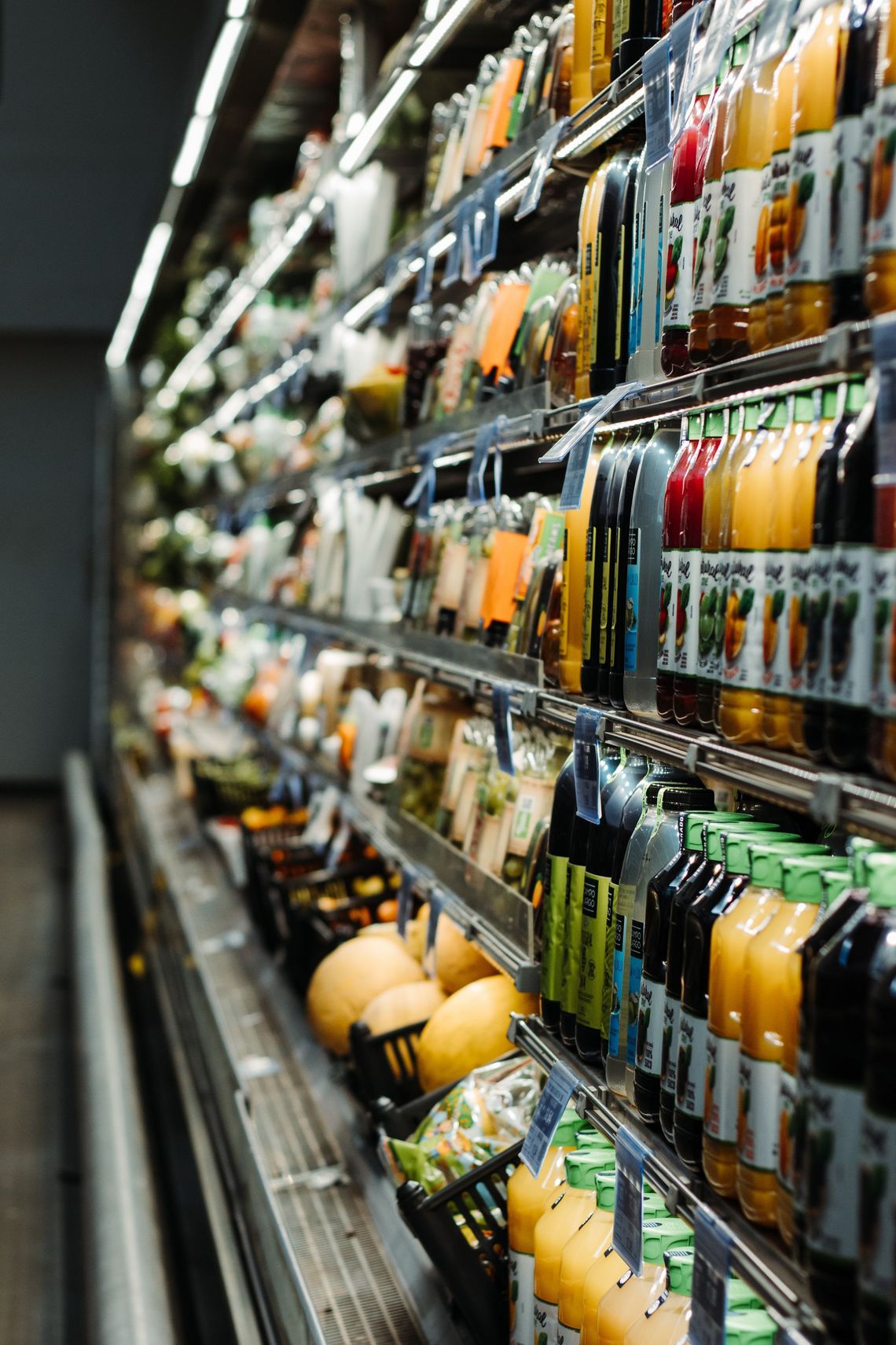
Une question ?
Notre équipe se tient à votre disposition et répond à toutes vos questions concernant l'impact de l'EVFTA sur le secteur de l’agro-alimentaire au Vietnam.
Representing 14% of the gross domestic product (GDP) and constituting the first sector of employment, agriculture is a historical and characteristic sector of the Vietnamese economy.
However, national production remains limited to certain products such as rice, coffee, corn, pork and rubber. Thus, to supplement the existing deficit in certain foodstuffs (e.g. Meat ; Dairy products; etc.), Vietnam imports from Asia but also from Europe.
In the agro-food sector, the European Union is in deficit in its trade with Vietnam but it enjoys an excellent image among the Vietnamese population.
This population is in full evolution. Over the last decades, the country has rapidly urbanized to the benefit of a growing middle class and a rising median wage. The new face of this population is changing in favor of a westernization of tastes. Moreover, the young generation is more oriented towards quality products with a certain origin.
In view of these elements, European products seduce Vietnamese consumers and Vietnam seduces European producers. This reciprocity should intensify during the EVFTA era, which facilitates access to the Vietnamese market by lightning import procedures and customs duties. The strengthening of this trade should also be achieved through greater protection of European products in Vietnam.

European alcoholic beverages : a quality wanted by the Vietnamese middle class
The market for alcoholic beverages in Vietnam is one of the most dynamic in Asia. This is due to the expansion of a middle class with distinguished expectations, which is reviving the competition between beer and wine.
Indeed, while Vietnam ranks among the top 15 beer-consuming countries and is in third place on the continental level (43 L per person/year), wine consumption is growing at an admirable rate, with an average annual growth of 5.3% between 2013 and 2018.
The members of this class see wine consumption as a means of distinguishing themselves socially but also, and above all, professionally. In this social quest, Vietnamese people pay particular attention to the quality of the wine, the credibility of the brand and the packaging. So, European products are favored by consumers.
This trend is confirmed with regard to wine imports. In terms of imports (in value), French and Italian wines are, respectively, in second and third place behind Chile, whose wine already enjoys tariff advantages.
Nevertheless, and unlike beer, wine remains a product reserved for a certain part of the population.
Beer represents 90% of alcohol consumption in Vietnam. Produced locally and sold at a price accessible to all, this beverage is an essential part of Vietnamese culture.
The country is the third largest beer producer in Asia with a production of 4.6 billion liters of beer in 2018 (annual growth rate of 10%).
Although the market is dominated by local production, beer imports are increasing (10.7 million euros in 2018). At European level, while Germany leads the way in terms of the value of beer imports to Vietnam, the Czech Republic and Belgium share the podium with Mexico in terms of the volume of beer imported into Vietnam.
As an element of socialization, the consumption of alcoholic beverages is a market conducive to European investment, whatever its form.
European meat products : a food safety reassuring Vietnamese consumers
Today, the consumption of meat products represents 10% of Vietnamese consumption.It is the third most consumed type of food product in Vietnam.
Among meats, pork represents ⅔ of the national consumption. The country is the leading producer of pork meat in ASEAN, but the multiplication of epidemic and sanitary scandals in Vietnamese farms (cf. Case of swine fever in 2019) opens this market to European companies whose products benefit from an excellent image (traceability; respect of hygiene standards).
Concerning beef and poultry productions, Vietnam is not able to cover domestic demand. Each year, the country imports nearly 36 kilotons of beef and 125 kilotons of poultry. Given the trend of recent years, this sector should continue to grow, opening a window of opportunity for European meats.
According to the latest estimates, pork and beef consumption should continue to grow, reaching an annual growth rate of 3% and 3.9% respectively by 2023. Conversely, the growth rate for poultry is expected to decline but remain around 7% per year.
The EU already accounts for 10% of Vietnam's meat imports. However, the requirements of the domestic demand and the favourable stipulations of the EVFTA should make Vietnam an attractive market for the producers of Europe.
European dairy products : an emerging consumption in the Vietnamese population
Per capita consumption of dairy products remains relatively low compared to the West. However, it has been growing rapidly and steadily for several years.
Among dairy products, cheese has one of the highest annual growth rates, with an estimated 8% for 2023.
For a long time reserved for the wealthiest Vietnamese and tourists, cheese is beginning to become part of the consumption of the general population.
Knowledge of cheese, in terms of production, brands or health effects, remains limited in Vietnam. However, events are regularly held for the Vietnamese public to disseminate information on dairy products in general, and cheese in particular.
This trend is bearing fruit since, although cheese cannot yet be considered as an element of everyday cooking, it is gradually integrating some typical dishes of Vietnamese cuisine (e.g. tea with cheese jelly; sausage with cheese; etc) and is also the origin of new dishes.
Today, France and Germany are, respectively, the second and third largest cheese importers in Vietnam. Together, they represent 1⁄5 of cheese imports into the country.
The EVFTA comes at a key period because the market is just emerging. This situation offers good views for European producers.
Finally, for all these products, the Vietnamese consumer is looking for a certain quality. This search passes by confidence in the product and the respect of sanitary standards. As such, European products have all the elements to meet this demand. This market analysis, already favorable to investment, is accompanied, under the EVFTA era, by a lightening of administrative procedures and a reduction of customs duties.

Lightening of non-tariff barriers
Firstly, thanks to the EVFTA, exporters from both parties will be able to use regional platforms to label, repackage and ship their products to the other party's territory. This "non-alteration" clause allows the transit of products through hubs such as Singapore or Hong Kong without affecting the origin of the product and the benefit of the tariff advantages of the EVFTA.
Alcoholic beverages are concerned by the lightening of non-tariff barriers. Indeed, European exporters can be reassured by Vietnam's commitment not to make distribution conditions more restrictive than they are. Likewise, the issuing of licenses will be done in compliance with the principle of non-discrimination.
Concerning meat products, the pre-listed products will be considered to comply with the Vietnamese legal framework and can therefore be automatically entered into Vietnam.
Finally, and generally speaking, the EVFTA subjects bilateral trade between the EU and Vietnam to the sanitary and phytosanitary standards as set out in the WTO SPS Agreement. This is a real guarantee for consumers and an added value for the products of each party.
The gradual reduction of customs duties
Before the EVFTA, the European products mentioned above were heavily taxed upon their arrival in Vietnam (see table below).
However, these custom duties had a significant impact on the final price. As a result, these European products were generally reserved for a Vietnamese consumer with high purchasing power. The gradual lowering of customs duties within 10 years should therefore democratize prices and broaden the public interested in these products.
| Product | Base rate | EVFTA |
| Wine and spirits | 50% | Year 1 : 44% Year 4 : 25% Year 8 : 0% |
| Beer | 35% | Year 1 : 34% Year 6 : 25% Year 11 : 0% |
| Cheese | 10% | Year 1 : 8% Year 3 : 4% Year 5 : 0% |
| Sausages | 22% | Year 1 : 20% Year 5 : 12% Year 11 : 0% |
| Fresh and frozen poultry meat | 40% | Year 1 : 36% Year 5 : 22% Year 11 : 0% |
In addition, this tariff reduction will allow fairer competition between European products and foreign products already benefiting from tariff preferences. For example, Vietnam is currently one of the principal markets in South-East Asia regarding the sector of bakery/patisserie. The OECD in a 2018 survey, estimated that the consumption of wheat-based products will steadily increase by 2.6% each year from 2017 to 2027 in Vietnam. In this sector, the “Made in France” enjoys a strong reputation and can make a difference. Since the 1st of January, with the EVFTA, French enterprises exporting towards Vietnam benefit from a new custom duties reduction. This opportunity is even more important and overdue, considering the fierce competition in this sector with countries that are part of the CPTPP (such as Canada, Australia…).
Finally, it should be noted that the provisions of the EVFTA only have an impact on customs duties. They do not have an impact on excise duties or on value added tax and the other internal taxes.
The last significant element for this sector is the protection of European products on the Vietnamese market.
Indeed, the Vietnamese market is becoming more protective for EU products. As à matter of fact, at the end of the negotiations, Vietnam committed to protect 169 European geographical indications (GI). Thanks to this legal protection it will be possible to fight against counterfeiting. This reinforcement should reassure European producers and offer a guarantee of quality and transparency for the Vietnamese consumer.
Note that this list is not definitive. In other words, the parties will always have the possibility to extend this list in the coming years.
On the European side, 87 European wines are protected, including 24 French wines (e.g. Bordeaux; Beaujolais), 4 beers (e.g. Münchener Bier; České pivo) and many meats (e.g. Bayonne Ham) and dairy products (e.g. Feta; Comté; Parmigiano Reggiano; etc.).
To sum up, for several years, the agro-food sector has been carrying many opportunities for European investors. At a time when the Vietnamese consumer is more and more vigilant about his food, EVFTA reinforces the attractiveness of European products and facilitates, in many aspects, their entry into the Vietnamese market.
© Article written by the France-Vietnam Chamber of Commerce and Industry (CCIFV). Reproduction rights reserved. |

Notre équipe se tient à votre disposition et répond à toutes vos questions concernant l'impact de l'EVFTA sur le secteur de l’agro-alimentaire au Vietnam.